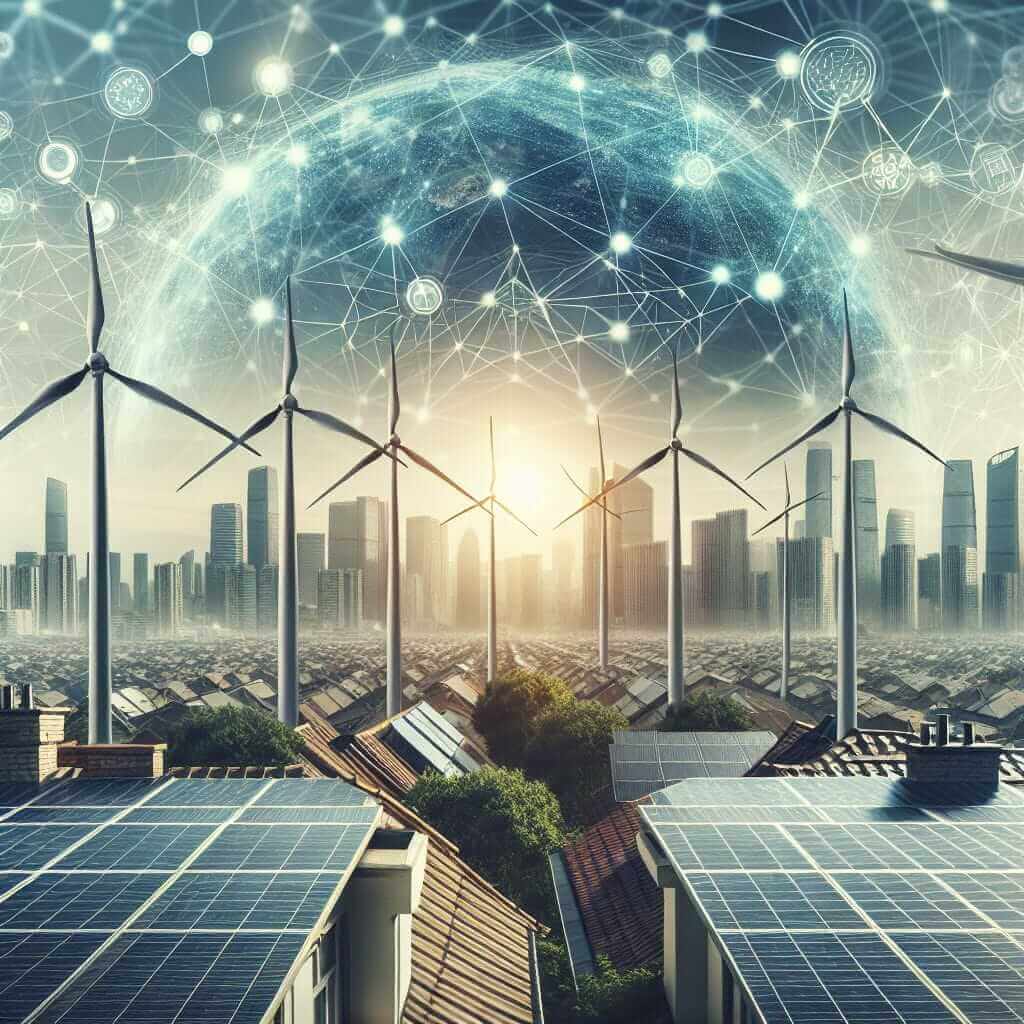The IELTS Reading test is designed to assess a candidate’s ability to understand and interpret written English. It involves different types of questions such as multiple choice, true/false/not given, and short answer questions, among others. Recently, topics related to renewable energy and its technological solutions have become more prevalent in the IELTS Reading section, reflecting global concerns about sustainability and climate change. An understanding of such topics can be beneficial for those preparing for the IELTS exam, given their relevance in both academic and general training modules.
Technological Solutions to Renewable Energy Challenges
IELTS Reading Practice: Medium Text
Read the following passage carefully before answering the questions that follow.
Despite the vast potential of renewable energy sources, several challenges hinder their widespread adoption. Technological advancements provide promising solutions to overcome these obstacles and accelerate the transition to sustainable energy.
One of the significant challenges is the intermittency of renewable sources like solar and wind energy. Energy storage technologies, such as advanced batteries and pumped hydro storage, are vital in addressing this issue. These solutions store excess energy generated during peak production times and release it during periods of low production, ensuring a stable energy supply.
Grid integration is another critical hurdle. The current energy grid is designed for consistent power outputs from fossil fuel-based plants, making it less adaptable to the variable nature of renewable energy. Innovations in smart grid technology, including advanced sensors and automated control systems, enhance the grid’s ability to manage fluctuations and distribute energy more efficiently.
Moreover, the high initial costs associated with renewable energy projects can deter investments. Emerging technologies like perovskite solar cells and enhanced geothermal systems are making renewable energy more affordable by increasing efficiency and reducing installation costs. Government incentives and private sector investments also play a crucial role in making these technologies more accessible.
Finally, technological breakthroughs in hydrogen fuel cells present a promising solution for sectors where electrification is challenging. Hydrogen can be produced using renewable energy and used for various applications, from transportation to industrial processes, thereby reducing dependence on fossil fuels.
In summary, while challenges remain, technological innovations are key to overcoming barriers to renewable energy adoption. Continued research and development, combined with supportive policies and investments, will pave the way for a sustainable energy future.
Questions
Multiple Choice
-
What is the main solution to the intermittency of renewable energy sources?
- a) Increased use of fossil fuels
- b) Advanced energy storage technologies
- c) Reducing energy consumption
- d) Building more power plants
-
How do smart grids help in integrating renewable energy into the current grid system?
- a) By storing more energy
- b) By using fossil fuels more efficiently
- c) By managing energy fluctuations and distribution
- d) By reducing energy production
Identifying Information (True/False/Not Given)
-
Perovskite solar cells are currently the most expensive solar technology.
- a) True
- b) False
- c) Not Given
-
Hydrogen fuel cells are only used in the transportation sector.
- a) True
- b) False
- c) Not Given
Short-answer Questions
- What role do government incentives play in the adoption of renewable energy technologies?
Answer Key
- b) Advanced energy storage technologies
- c) By managing energy fluctuations and distribution
- b) False
- b) False
- Government incentives help make renewable energy technologies more accessible by reducing costs and encouraging investments.
Common Mistakes
- Misinterpreting Questions: Candidates often confuse ‘True/False/Not Given’ questions with ‘Yes/No/Not Given’. It is crucial to understand the difference between factual information and the writer’s opinion.
- Ignoring Keywords: Failing to identify and underline keywords in the passage can lead to incorrect answers. Keywords help in pinpointing relevant information.
- Overcomplicating Answers: Especially for short-answer questions, candidates sometimes provide more information than required, leading to potential errors.
Vocabulary
-
Intermittency (noun): /ˌɪntərˈmɪtənsɪ/ – The occurrence of irregular intervals. Example: The intermittency of solar energy is a major challenge.
-
Grid integration (noun): /ɡrɪd ɪntɪˈɡreɪʃən/ – The process of incorporating renewable energy into the existing power grid. Example: Grid integration of renewable energy is crucial for stability.
-
Perovskite solar cells (noun): /pəˈrɒvskaɪt ˈsoʊlər sɛlz/ – A type of solar cell that is cheaper and more efficient. Example: Perovskite solar cells are revolutionizing the solar industry.
Grammar Focus
-
Present Continuous Tense:
- Form: [am/is/are + verb-ing]
- Usage Example: Technological advancements are providing solutions to renewable energy challenges.
-
Passive Voice:
- Form: [am/is/are + past participle]
- Usage Example: The energy grid is being enhanced by smart grid technology.
Tips for Scoring High in IELTS Reading
- Practice Regularly: Regular practice with a variety of texts will help improve speed and comprehension.
- Focus on Vocabulary: Enhance your vocabulary related to common IELTS topics, including renewable energy.
- Time Management: Develop skills to manage your time effectively during the test.
- Read Instructions Carefully: Always carefully read the instructions to avoid simple mistakes.

By following these tips and practicing with targeted exercises on current and globally relevant issues, candidates can significantly improve their IELTS Reading scores and their understanding of important topics like renewable energy.